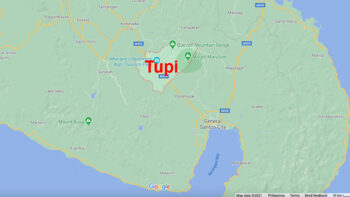MALAYBALAY CITY (MindaNews/11 September) – Bukidnon is among four provinces in the country where the International Labor Organization (ILO) is putting in place a continuing program to look into the plight of thousands of child laborers, according to the ILO website.
Sol Ebarle, ILO project coordinator in Bukidnon, on Thursday confirmed via email the implementation of the project in the province.
Aside from Bukidnon, the ILO is implementing the second phase of the same program in Northern Samar, Masbate and Quezon.
The four provinces were chosen based on the 2001 child labor survey and other data like dropout rate, poverty incidence, number of poor families and results of a survey on population and family income, an ILO official was quoted in a related report posted on a blog last month.
MindaNews is yet to get ILO’s actual data on Bukidnon.
The project is under the International Programme on the Elimination of Child Labour (IPEC) Time Bound Project Phase 2 “Towards a Child Labour Free Philippines” of the ILO and United States Department of Labor (USDOL).
Provincial Board member Jay Albarece, who chairs the Sangguniang Panlalawigan committee on labor and manpower development clarified that the province may not be number one in child labor statistics.
“I would like to believe that the province is randomly picked for the ILO project,” he said.
He said Bukidnon is a leader in agricultural production and its economy depends on the large banana, pineapple, and sugar plantations, as well as on the small rice, corn, and vegetable farms.
“With all upsides, I can’t help but borrow terms from our progressive friends: the province remains feudal as of this day. Many families are dependent on land, so dependent that children in some families are forced by necessity to participate even in hazardous areas of agricultural production,” he said in an SMS Friday.
In the Philippines, the National Statistics Office’s (NSO) Survey on Children indicates that 4 million children aged 5-17 work, with half below 10 years of age, and 2.4 million in hazardous jobs. Many child workers are in rural areas, with over half in farming, hunting, and forestry. Boys outnumber girls, though girls work longer, more than eight hours a day.
Labor and Employment Secretary Rosalinda D. Baldoz was quoted in a report last month that the Department of Labor and Employment and the ILO-International Program for the Elimination of Child Labor are teaming up anew in a new project that seeks to reduce the worst forms of child labor by as much as 75 percent.
“From 2005 to 2008, the Gender Statistics on Labor and Employment posted a seven-percent downward trend in the number of children 5-17 years old who are economically active. But while the GSLE generates data on working children, there still seems to be a dearth in data on children who are in the worst forms of child labor,” the report quoted Baldoz as having said.
The new project titled Strengthening National Capacities to Support the Philippine Program Against Child Labor’s Vision of a Child Labor-Free Philippines aims to contribute to reducing the incidence of the worst forms of child labor by 75 percent.
The program has four components namely, knowledge management, effective partnership, area-based services, and sustainability.
The Child Labor Act prohibits the use of children below 18 years old for slavery, armed conflicts, prostitution, pornography, drug trafficking and work hazardous to health. (Walter I. Balane/MindaNews)
